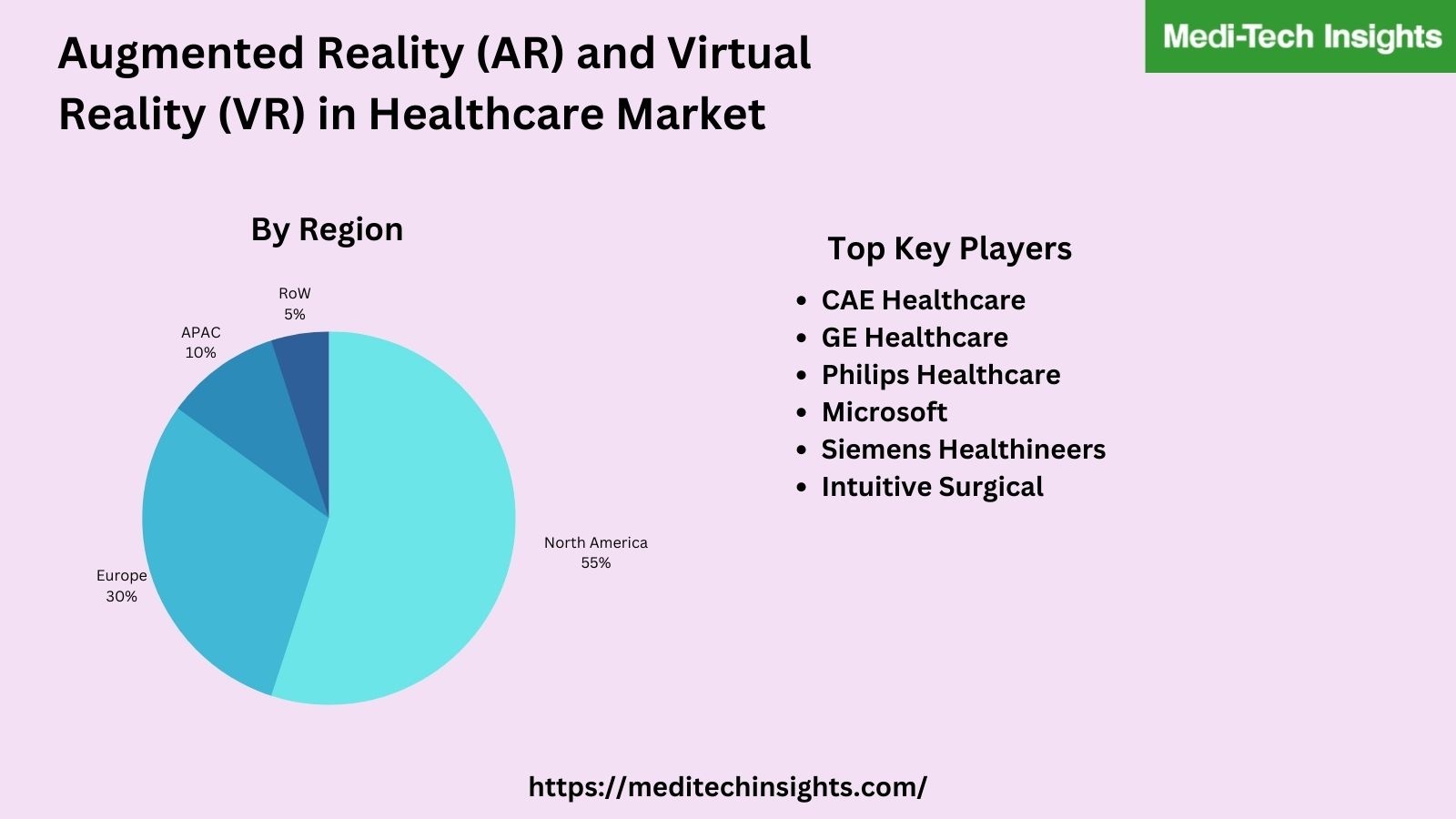The market is driven by technical improvements and increased digitalization, as well as government efforts, a large number of start-ups entering this field, a diverse range of applications, and expanding partnerships/M&As and financing levels. To learn more about the research report, download a sample report.
AR technology enhances the actual world by adding data, whereas VR is a totally digital, computer-generated, 3D experiencing environment. While AR and VR technologies were first adopted solely by the gaming industry, other industries, including healthcare, are rapidly realizing their benefits and investigating the potential of AR/VR for medical applications.
Tremendous potential for AR and VR in the healthcare market.
AR and VR in healthcare, while now a small sector, have significant development potential. These technologies are used in various applications, including as medical teaching, surgical planning, pain management, patient care, emergency treatment, post-traumatic stress treatment, and mental health therapy. Furthermore, VR is showing useful in the early diagnosis of Alzheimer’s disease and the identification of early symptoms of schizophrenia.
For instance,
- In October 2023, Surgical Theater announced that Stanford Medicine performed the first spine surgery using its augmented reality technology, SyncAR® Spine, integrated with Microsoft HoloLens headsets, marking a significant milestone in their partnership for advancing XR surgical care
- In March 2022, CAE Healthcare released an enhanced CathLabVR cardiac training tool featuring an updated percutaneous coronary intervention (PCI) module that leverages mixed reality to teach coronary angioplasty and stenting techniques, offering over 31,000 unique scenarios for practicing the treatment of coronary blockages and heart attacks.
- Founded in 2020, Rey offers online VR-based therapeutic sessions for mental health management
“The potential of AR and VR in healthcare is huge. Companies in this advanced technology field are constantly striving to surpass the challenges by developing accurate and explicit solutions that enable breakthroughs in the way treatment and diagnosis is done in the medical field.” – Chief Executive, Provider of AR Platform for Surgery Guidance, US
Rapidly Growing VC/PE Investments and Regulatory Approvals Accelerating Growth & Innovation in AR and VR in Healthcare Market
The Covid-19 pandemic induced the world to go virtual. The last couple of years have marked a turning point with several hyped technologies like AR/VR finally becoming a reality in healthcare, backed by surging VC investments and regulatory clearances. Some of the key recent developments in this market include:
- In July 2023, Proprio announced securing $43 million in Series B funding from new and existing investors to support the commercialization of its AI-driven surgical navigation platform, meeting significant demand in the US and internationally
- In February 2022, MindMaze announced securing a $105 million financing round led by Concord Health Partners to accelerate its global commercial growth, enhance ongoing R&D, and strengthen the clinical development pipeline of its pioneering digital therapeutic solutions for various neurological diseases
- In Nov 2021, the FDA approved AppliedVR’s EaseVRx, a prescription-use immersive virtual reality (VR) system for chronic pain reduction
- In May 2021, Heru, Inc., a US-based developer of wearable AI-powered vision diagnostics and augmentation software, raised $30m in Series A funding
Regional Outlook – North America Leads the Adoption While EU is Not lagging Behind
North America dominates the AR/VR in the healthcare market and is expected to witness fastest growth in the next 5 years. Major factors that are driving growth in this region are supporting healthcare IT infrastructure, greater adoption of advanced technologies, significant VC fundings, presence of large number of AR/VR companies/startups in the US and favorable government initiatives. For instance, The National Institute of Health of the U.S. government is offering funds for research in virtual reality in healthcare. Moreover, The Medical Extended Reality Program in the FDA’s Center for Devices and Radiological Health (CDRH) conducts regulatory science research to help ensure patient access to innovative extended reality-based devices that are safe and effective.
Competitive Landscape: Augmented Reality (AR) and Virtual Reality (VR) in Healthcare Market
The global AR and VR in healthcare market is highly competitive and fragmented. Some of the key and emerging players in this market include CAE Healthcare, GE Healthcare, Philips Healthcare, Microsoft, Siemens Healthineers, Intuitive Surgical, Psious, MindMaze, Virtualis, Oxford VR, Augmedics, Surgical Theater, EchoPixel, Medivis, Health Scholars, Vicarious Surgical, Touch Surgery, Propio Vision, Immersive Touch, OSSO VR, SentiAR, Medical Augmented Intelligence, SyncThink, XRHealth, and Karuna Labs among several others.
The global AR and VR in Healthcare market is expected to gain further momentum in the coming years due to technological advancements, favourable government initiatives, a significant number of start-ups entering the space, a wide scope of applications, and aggressive organic and inorganic growth strategies followed by the players.

